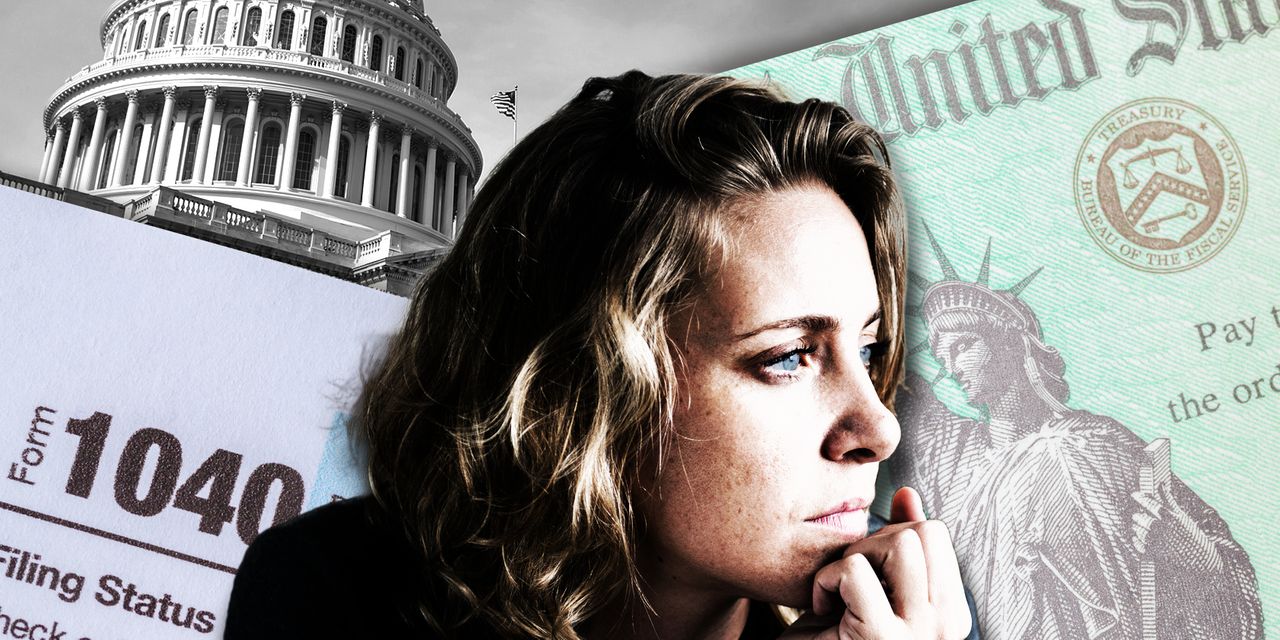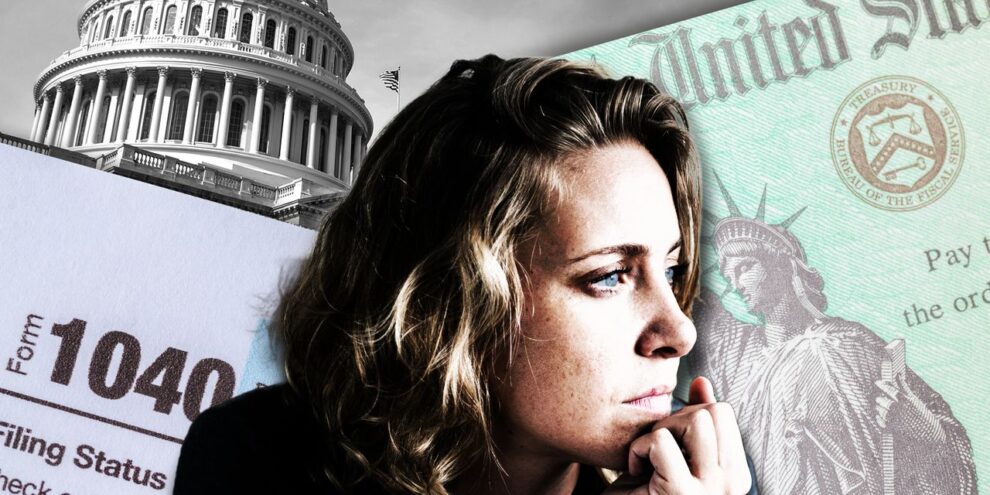
Now that President Joe Biden has signed the $1.9 trillion COVID-19 relief bill authorizing $1,400 checks to millions of households, people who received the first two stimulus checks could watch the third round skip them because of tighter payout rules.
But experts told MarketWatch that the tax code could supply some people who are close to the eligibility cut-off with a way back to the third round — if they have the cash on hand to get there.
Certain tax-advantaged accounts could do double duty by helping people save for retirement and health-care costs while also helping them get a $1,400 economic impact payment, experts say.
“ This time around, stimulus checks vanish for individuals making above $80,000 and couples making a combined $160,000. ”
“There are only two tax codes in the world: one for the informed, and one for the uniformed,” said Michael Foguth, the president and founder of Foguth Financial Group in Brighton, Mich. “This is the same scenario. “
Senators narrowly passed the latest relief bill on Saturday. This time around, the $1,400 direct payments will end earlier once a household exceeds the income threshold for full payment. Individuals making less than $75,000 a year in adjusted gross income and their dependents each would receive checks totaling that full amount. The payments decrease for individuals earning $75,000 and up — and they phase out completely for individuals making $80,000 or more and couples making $160,000 or more in adjusted gross income. That’s a change from a prior income cap of $100,000.
In the first round of $1,200 stimulus checks, payments ceased for individuals making $99,000 and couples making $198,000 in adjusted gross income. In the second round for $600, payments ended at the adjusted-gross-income level of $87,000 for individuals and $174,000 for couples.
The Internal Revenue Service will base eligibility for the $1,400 checks on 2020 income-tax returns — or 2019 returns if 2020 returns are not yet available, according to the bill.
The House of Representatives passed the bill on a 220-211 vote. The bill will distribute direct payments to 85% of U.S. households. Checks could hit accounts as soon as this weekend, the White House says.
Some 11.7 million adults and 4.6 million children will not receive the third checks under the Senate version as compared with the version that passed the House in February, according to calculations by the Institute of Economic Policy and Taxation. Payments in the previous House version would have ended at $100,000 for individuals and $200,000 in adjusted gross income for married couples.
Foguth is checking whether some clients can find a way back into the third round.
The adviser said he’s fielded calls from six clients or their grown children. They are curious how the stricter payout rules apply, and whether there’s anything they can do to potentially get under the wire. “I think it’s a fear of missing out,” he said, later adding that he was “running the numbers on somebody right now.”
Pamela Rodriguez is doing the opposite. Around three times last week, the founder of Fulfilled Finances in Sacramento, Calif., analyzed clients’ tax filings prior to their submission. With some strategy and planning, Rodriguez said, she might have been able to reposition clients for a third check.
Don’t bother, they said. Other people needed the money more than they did, she recalled them telling her.
“ If taxpayers can gain advantage and shoehorn their way into a third stimulus-check payment, should they do it? ”
Rodriguez said she was “a little taken aback” at first but understands their perspective. “It’s almost like they feel morally compelled to not do that.”
That brings up a different question surrounding a massive bill meant to pull struggling families, businesses and local governments back from the brink: If taxpayers can gain advantage and shoehorn their way into a third stimulus-check payment, should they?
“Pay what you should, but don’t pay a penny more,” Foguth said. In this case, if there’s a tax opportunity to qualify for more money, by all means people should at least consider it, he said.
Attempts to lower taxable income are a standard part of the wealth-creation game, Rodriguez added. Still, the fact that they’d be engaging in such pursuits in the midst of a pandemic just might be giving some affluent taxpayers pause, she said.
Angling for personal gain might rub someone the wrong way, especially if their idea of success encompasses “the greater good,” Rodriguez said. It comes down to the question, “What does your personal success mean to you?” she said.
However a person answers the question, here’s how tax-code quirks and the relief bill combine to create paths back to eligibility for people who are on the outside looking in as of now.
Individual Retirement Accounts
The stimulus-check amounts are based on a household’s adjusted gross income. Funding IRAs can reduce that adjusted gross income, and contributions can still be made through April 15.
Yearly contribution limits to a traditional IRA are $6,000 or $7,000 for people age 50 and above. The dollar-for-dollar deductions on those contributions can put someone outside the cutoff in striking distance of returning to eligibility.
But rules get complicated quickly, depending on marital status, income and whether anyone involved already has access to a retirement account like a 401(k) through an employer.
The IRS doesn’t allow deductions for people who have access to retirement plans at work and are making just above $80,000 a year for a single filer or $160,000 for a couple.
But if you’re single and lack access to a retirement plan at work, the IRS says you can take a full deduction up to your contribution limit.
The same applies if you are married, lack a retirement plan at work and are filing with a spouse who also doesn’t have a retirement plan. If you are married and filing jointly with a spouse who does have a plan, the IRS will also allow a full deduction up to the contribution limit.
“That works like a charm — add to the spousal IRA,” Rodriguez said.
There’s a catch beyond the tax rules, Foguth added. “In order to bring income down, they have to have money to be able to dump into these IRAs. … It’s such a small sliver of people who are going to get it.”
Health Savings Accounts
When someone has a high-deductible health plan — defined by the IRS as a deductible of at least $1,400 for an individual and $2,800 for a family — they can contribute to a health-savings account.
It’s a pretax account and is tax-free on the payout end when used for qualified medical expenses. There’s currently a $3,550 individual contribution limit and a $7,100 contribution limit on family coverage.
Like an IRA, someone with an HSA has until April 15 to reach the maximum contribution.
Employer contributions to the account are not counted as income, according to the IRS. But a person’s own contributions are deductible, the IRS noted.
So a hypothetical single taxpayer who’s making $83,000 a year in adjusted gross income could conceivably contribute $3,550 now (if they haven’t already contributed through the year) to get under the cut-off, said Charles Sachs, chief investment officer at the Miami-based Kaufman Rossin Wealth.
“It’s a really a good little side bucket to stash the money into,” Sachs said. “The IRS will be first to tell you you’re perfectly in your purview” to work within the rules as they are written, he added. “These are not loopholes. These are not shenanigans.”
There were more than 28 million HSA accounts in the U.S. with nearly $66 billion in assets at the end of 2019, according to the Employment Benefit Research Institute, a think tank studying worker benefits.
The waiting game
Sure, there are methods of reducing the income the IRS counts on or income-tax returns. But another way of getting under the stimulus-check wire is controlling which return the IRS sees, tax experts say.
The IRS will look at the 2020 return — the ones currently being filed — and, if it doesn’t have access to those, it will just look at 2019 returns instead.
If a 2019 return puts a person squarely inside eligibility but the 2020 return could knock them out, that’s a strong reason to stand pat for a moment.
Even before lawmakers struck a deal on the stimulus checks, some financial planners were advising their clients to slow down and wait till they had a check in hand before filing their 2020 returns.
One of Rodriguez’s clients would miss the chance at a third check if the IRS had the 2020 tax return in hand, she said. The client is waiting, she said.
If people miss the $1,400-check break-off point now, they will have to wait even longer. They may still have a chance at the check — next year.
Like people who completely or partially missed the cash from the first two checks, someone who makes too much this year to qualify might have a chance to claim the $1,400 check next tax season, said Henry Grzes, lead manager for tax practice and ethics with the American Institute of CPAs.
For now, Grzes added, “if you clearly qualify under 2019 versus 2020, then you say wait.”



